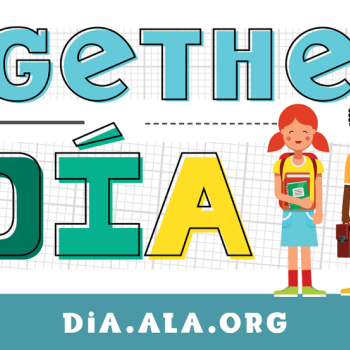
Developed under the leadership of author Pat Mora, El Día de Los Niños/El Día de Los Libros focuses on providing children with books in many languages and making reading an integral part of their lives. El Día de Los Niños/El Día de Los Libros is supported by the Association for Library Service to Children, a division of the American Library Association (ALA), and REFORMA, an ALA affiliate that provides library and information services to Latinos and the Spanish-speaking community.
Celebrate El Día de Los Niños/El Día de Los Libros by having students write and share their own multilingual stories:
- Read a book with parallel stories with the class, such as La Llorona: The Weeping Woman or The Day It Snowed Tortillas / El Dia Que Nevaron Tortillas, both by Joe Hayes. With students, examine the way that the books tell the story in two different languages.
- Arrange students in mixed multicultural groups and explain that together the groups will compose an illustrated, bilingual, or multilingual children's storybook to share with younger students.
- Return to the parallel stories read by the class to model how students will compose their own stories.
- Spend time exploring and creating the different parts that make up a professional book: title pages, acknowledgements, and dedications.
- Use the Book Cover Guide to discuss covers and dust jackets. Have students design these additional parts of the book.
- Students can use the Book Cover Creator to make the polished covers.
- Once the books are assembled, students can deliver them to their intended readers for a celebration of Día!
The official ALA site for El Día de Los Niños/El Día de Los Libros includes a state-by-state list of Día events, library programming ideas, a Día fact sheet, and downloadable Día brochures.
Pat Mora, founder of El Día de Los Niños/El Día de Los Libros, provides background and celebration suggestions on her personal website.
This Día-sponsored website features bilingual story time resources, a Spanish story time plan for preschoolers, and online resources for librarians working with Latino children. The site also includes guidelines and information on the Estela and Reforma Award, established to promote El Día de Los Niños/El Día de Los Libros.
This is the webpage for current winners of the American Library Association's Pura Belpré© Award, which is presented to a Latino/Latina writer and illustrator whose work best portrays, affirms, and celebrates the Latino cultural experience in an outstanding work of literature for children and youth.

The "1984" commercial launched Apple's Macintosh personal computer in the United States in January, 1984. The 45-second ad, which aired during a break in the third quarter of Super Bowl XVIII, was declared the best ad of the last 50 years in 1995. Directed by Alien and Blade Runner director Ridley Scott, the advertisement cost $1.6 million to produce and was aired only once.
After finishing one or more of the lessons on advertising below, have students create original advertisements. Have students review the advertising techniques they've studied (propaganda, advertising fallacies). Next, have students identify a subject for their ad, such as a favorite television show, CD, or product; an upcoming event; or a political candidate. Then, ask small groups to create advertisements designed to persuade others to use a product, hold a viewpoint, or participate in an activity. Students can use one of the following activities to share their ads:
- Videotape student presentations.
- Perform skits in the style of radio or television commercials.
- Draw posters or print flyers using the Printing Press interactive.
This page includes background information about the ground-breaking Apple commercial and the difficulties involved in airing it, as well as links to the commercial itself.
MediaSmarts provides lesson plans and other resources for teaching about advertising and media persuasion.
Media specialist Cynthia Matzat provides this slideshow, which highlights propaganda and other advertising techniques.
This PBS website illustrates the ways advertisers try to manipulate consumers. Included is a collection of interactive activities for kids.
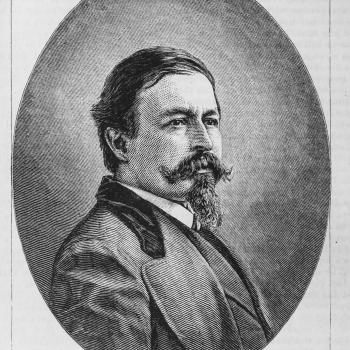
Thomas Nast was born on September 27, 1840. He was a 19th- century caricaturist and editorial cartoonist and is considered to be the father of American political cartooning. During the Civil War and Reconstruction era, Nast was well known for his cartoons supporting American Indians, Chinese Americans, and the abolition of slavery. Some of the images and icons he created or popularized include the Republican Party elephant, the Democratic Party donkey, and Uncle Sam.
Political cartoons, because of their powerful means of communicating the artists' message, are subject to "freedom of speech" protections. Have students create their own political cartoons after studying First Amendment rights and freedom of speech issues.
- First, explore free speech issues and the First Amendment using resources on this EDSITEment Freedom of Speech Week webpage. Ask students the following: "What constitutes free speech? When does one's freedom of speech become an infringement on another person's rights? How do political cartoonists exercise their first amendment rights?"
- Then, after completing one or more of the lessons below, ask students to comb the newspaper or Internet resources and create a list of current events.
- From this list, have students draw original cartoons using the techniques they've studied.
After students have completed their work, consider having them published in the school newspaper, or share them in the school library.
This extensive resource on Nast, offered by The Ohio State University, includes a biography, timeline, portfolio of Nast's cartoons, bibliography of works by and about Nast, and a teacher's guide. Also included is an essay titled "The World of Thomas Nast."
EDSITEment offers this collection of lesson plans and other resources on free speech and the First Amendment.
The Library of Congress offers this resource about political cartoons for teachers, including collections of historical political cartoons on American and British topics.
This ReadWriteThink resource links to information about First Amendment issues.

National Bullying Prevention Month was created by PACER in 2006 with a one-week event which has now evolved into a month-long effort that encourages everyone to take an active role in the bullying prevention movement. Efforts are focused on encouraging both personal and community responsibility to prevent bullying. During this month, communities are urged to address the problem of bullying through media campaigns, classroom activities, workshops, and other special events.
Promote school-wide awareness of bullying issues by sponsoring a poster contest. First, complete one of the lessons below and review information learned about bullying and the roles of bystanders and victims. Divide the class into three groups, and have each group create a poster representing the role of the bully, the victim, or bystanders to educate other classes about bullying issues. Then, advertise a poster-making contest to other classes, asking students to create posters that illustrate ways each student in the school can help stop bullying and make the school environment safer.
- Invite entrants to use any medium they wish to create their posters, including pencil, crayon, paint, or even an interactive medium such as the ReadWriteThink Printing Press (flyer format).
- Ask other classroom teachers, the school counselor, and the art teacher to help in judging the posters. Be sure to communicate your judging criteria as part of the contest.
Include a reproduction of the winning poster in the school newsletter or website, or feature the poster in the library, cafeteria, or main office.
McGruff.org provides resources for adults and children looking to stop bullying and educate others about bullying issues. Look for comics, a kids' poll, parent articles, and more.
This resource, from the U.S. Health Resources and Services Administration, offers fun games, webisodes, and other resources designed to teach children about bullying prevention.
This site provides information about bullying and offers tips for preventing bullying and providing help both to victims and to students who engage in bullying behavior.
The Meet Kelly Bear website provides this teacher's guide with strategies for teaching about bullying.
The goals of this site/center are to engage and educate communities nationwide to address bullying through creative, relevant and interactive resources.
In support of Bullying Prevention Awareness Month, the National Child Traumatic Stress Network (NCTSN) is providing resources for families, teens, educators, clinicians, mental health professionals, and law enforcement personnel on how to recognize, deal with, and prevent bullying.
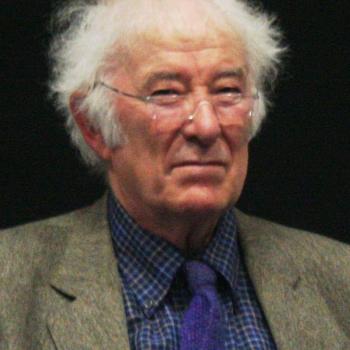
Seamus Heaney was born in Ireland on April 14, 1939. He published his first volume of poetry in 1965 and has gone on to publish nearly a dozen collections as well as a critically acclaimed translation of the epic Beowulf. Heaney has also written important prose about writing poetry, including The Government of the Tongue and The Redress of Poetry. An active promoter of the art of writing poetry, Heaney won the Nobel Prize in Literature in 1995. He died in 2013.
Share with students one of Seamus Heaney's most famous poems, "Digging." Ask students to focus on the figurative language the speaker uses to characterize himself as a writer, especially as he compares himself to his father and grandfather. Challenge students to discern the speaker's attitude toward himself as a writer, and how metaphor, simile, and image contribute to their understanding and appreciation of the poem.
Using Heaney's poem as an inspiration, invite students to write a poem that uses an extended metaphor (or a series of metaphors or other comparisons) to express their own attitudes toward themselves as writers. Point out that the speaker of "Digging" expresses his attitudes by comparing his pen positively to a gun, and then later, his pen both positively and negatively to a shovel or spade. Encourage students to use, as Heaney does, specific, vivid images to support the comparison they make.
The Internet Poetry Archive offers a collection of Heaney's poetry, along with a biography, bibliography, and more.
The Nobel Foundation provides biographical information, Heaney's 1995 acceptance speech, and related resources.
The BBC offers this interview with Heaney, in which he discusses his writing. For a lengthier lecture and a reading by Heaney, visit MITWorld's A Reading by Seamus Heaney, a video recording of a lecture given by Heaney at MIT.
This online guide provides an overview of the poem, details on its language and poetics, and an exploration of the translations of the work. Both the original version and a modern translation of the poem are available online in an interactive format.

Holocaust survivor Elie Wiesel was the author of over 40 books, the most famous of which, Night, is an autobiographical work based on his experiences during the Holocaust. Sequels to Night include Dawn and Day. Also recognized for his humanitarian and political activism, Wiesel was awarded the Nobel Peace Prize in 1986. He lived in the United States, where he taught at Boston University and served as the chairman of the Elie Wiesel Foundation for Humanity. Elie Wiesel died on July 2, 2016 in Manhattan.
Have students compare and contrast two views of the Holocaust from different authors. Have students first read both Night and Anne Frank: The Diary of a Young Girl. Then, have them look at the similarities and differences between these two accounts of Holocaust events. Ask students the following questions, using a Venn diagram to record responses during your discussion. If you prefer, students can work in small groups to create their own Venn diagrams using the ReadWriteThink Interactive.
- How are the two authors similar and different?
- How did their experiences during the Second World War differ? How were their situations similar?
- Did Anne Frank and Wiesel's main character share similar feelings?
- How did the formats of these two texts differ?
- What were the differences between the endings? Were there any similarities?
Extend students' study of the Holocaust by having them research stories of other survivors who may or may not have published books. Have students create a presentation highlighting the person they select.
Random House provides this interview with Wiesel. He discusses Night, his work as a writer, war criminals, religion, and more.
This biography is featured on the official website of the Nobel Foundation. The page also offers additional resources related to Wiesel, winner of the 1986 Nobel Peace Prize.
This resource from PBS provides a biography of Wiesel, a bibliography of his work, and a teacher's guide.
This United States Holocaust Memorial Museum page features personal accounts of people who experienced the Holocaust firsthand.
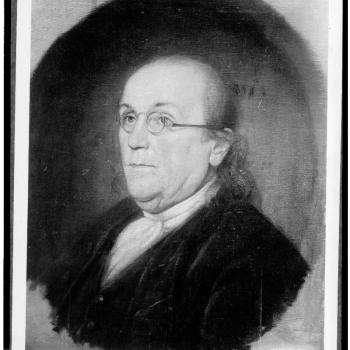
Statesman Benjamin Franklin was born on January 17, 1706, and is well known as one of the leading founders and important early political figures of the United States. Franklin is also known for his writings and achievements in a wide variety of areas-including his famous experiments with electricity. Among his many accomplishments, from 1775 to 1776, Franklin served as Postmaster General under the Continental Congress.
Note Franklin's service as Postmaster General by setting up your own classroom postal service. First, have students investigate the roles and duties of the USPS Postmaster General and Franklin's role in particular. Discuss Franklin's contributions to postal history, then have students set up their own mail delivery service.
- First, have the class nominate (by show of hands or ballot) and select a Postmaster General, who will organize your postal service.
- Set up mailboxes, such as mail pouches attached to student desks, shoeboxes with slotted lids, shelves, decorated coffee cans, etc. Then choose a frequency of delivery-daily? Morning and afternoon?
- Finally, have the Postmaster General organize a group of "mail carriers" to collect and deliver mail from and to mailboxes. You may wish to have all students take turns along with other classroom jobs, or accept volunteers who can be scheduled for mail duty on a rotating basis.
- Students can use the interactive Letter Generator to write letters to their classmates. Be sure students understand that their letters should be appropriate for the classroom, and that everyone should be included. More tips are available for use with the Letter Generator.
This online exhibit from the Library of Congress examines Franklin through a wealth of primary sources.
PBS offers this extensive resource about Benjamin Franklin's life and work. Included are lesson plans and interactive activities.
This Smithsonian Institute website offers information on U.S. postal history and stamp collecting. Included is information on the Pony Express, Airmail, Mail Call during times of war, and details on the role of Benjamin Franklin in the establishment of the U.S. Post Office.
This child-friendly site provides readable information about Franklin's work as a printer, librarian, inventor, and statesman. A cartoon Ben then serves as host, explaining a variety of topics related to the U.S. government.
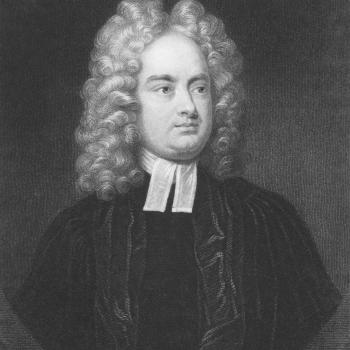
Anglo-Irish writer Jonathan Swift was born on November 30, 1667. Swift is famous for works including Gulliver's Travels, A Modest Proposal, and A Tale of a Tub. Known for his satirical writings, as well as his poetry and essays, Swift also wrote under several pseudonyms, including the name Isaac Bickerstaff.
A Modest Proposal is considered to be one of the best examples of satire ever written. Have students explore the elements of satire and parody using the lessons below. Then, have them extend that exploration by surveying instances of satire and parody in television and film, advertising, and journalism. Begin by dividing students into three groups and assigning each to either television and film, journalism, or advertising.
- Have each group explore their assigned topic, looking for examples of satire or parody. As they find examples, encourage students to locate concrete examples they can bring in for a class display. Examples might include a DVD case or movie review, a magazine advertisement, a newspaper editorial, a book or book jacket, etc.
- Working as a group, have students create an exhibit that highlights their findings. As part of the display, students should describe how each item is an example of satire or parody, what satirical technique is being used, and other related information.
This site, part of the Victorian Web, includes a biography of Swift, information about the political and social context of his time, his views on religion, and more.
Read a brief biography of Swift at the HyperHistory Online page. Also included is a link to related information.
This website offers the full text of Swift's Gulliver's Travels, available online or in PDF, Kindle, and several other formats.

On October 14, 1884, George Eastman received his patent for photographic film. This led the way for the production of the first small hand-held box camera, bringing photography out of the exclusive realm of the professional photographer. Today, the possibilities for bringing photography into the classroom are nearly boundless.
Explore photography and digital imaging to discover new ways of combining visual and textual composition to enhance every area of the curriculum. Create a scrapbook that includes photographs, video clips, audio clips, and student work. First, choose a format based on your available resources. Examples include PowerPoint presentations, websites, videotapes, or booklets. Keep a camera/video equipment handy, and include some of these in your project:
- Students' favorite pieces of writing or artwork, including descriptive captions or commentary
- Videotapes of songs or skits
- Students' descriptions of what they are learning, via a video or audio interview or in writing
- Photomontages of units studied
Work on your scrapbook throughout the year, and then present it to parents at an end-of-year party!
This U.S. Patent and Trademark Office press release describes how George Eastman's invention allowed for the mass production of cameras.
This article from Education World offers two dozen different classroom activities that make use of a digital camera.
On this page of educational technologist Kathy Schrock's website, she provides links to resource pages specifically designed to enhance the use of cameras and other devices in the K–12 classroom.
This lesson plan from Scholastic is designed for grades 6–12.
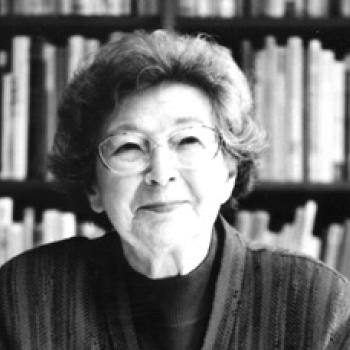
Beverly Cleary was born on April 12, 1916, and has authored dozens of books since her first, Henry Huggins, in 1950. Cleary has won many awards for her writing, including the 1984 Newbery Medal for Dear Mr. Henshaw, and the Newbery Honor for Ramona and Her Father and Ramona Quimby, Age 8. The Beverly Cleary Sculpture Garden honors Cleary's contributions to children's literature and highlights her most memorable characters.
Create your own classroom tribute to Beverly Cleary while students practice persuasive writing. Have students select the characters they believe are the most memorable from Cleary's book and then write short persuasive essays to explain their choices.
- After students select their characters, have them use the Character Map section of the interactive Story Mapping tool to brainstorm ideas about why the characters are memorable.
- Have students use their Character Maps and notes to write persuasive essays that explain why the characters are special and important. Students can map out their essays using the online Persuasion Map.
- Next, provide a variety of art materials (clay, paint, pencils, markers) and have students create sculptures, drawings, or paintings of the characters.
Display students' artwork and writing together in a classroom, cafeteria, or hallway as a Beverly Cleary tribute.
Read about this tribute to Beverly Cleary, and view a gallery of sculpture images.
HarperCollins provides this website for teachers and children. Resources include trivia, author and character information, a booklist, and printable teaching guides.
In this video interview, provided by Reading Rockets, Beverly Cleary discusses how she became a celebrated author.
This brief, kid-friendly biography is accompanied by a list of Cleary's books.
Check out the movie starring Joey King as Ramona Quimby and Selena Gomez as Beezus Quimby.